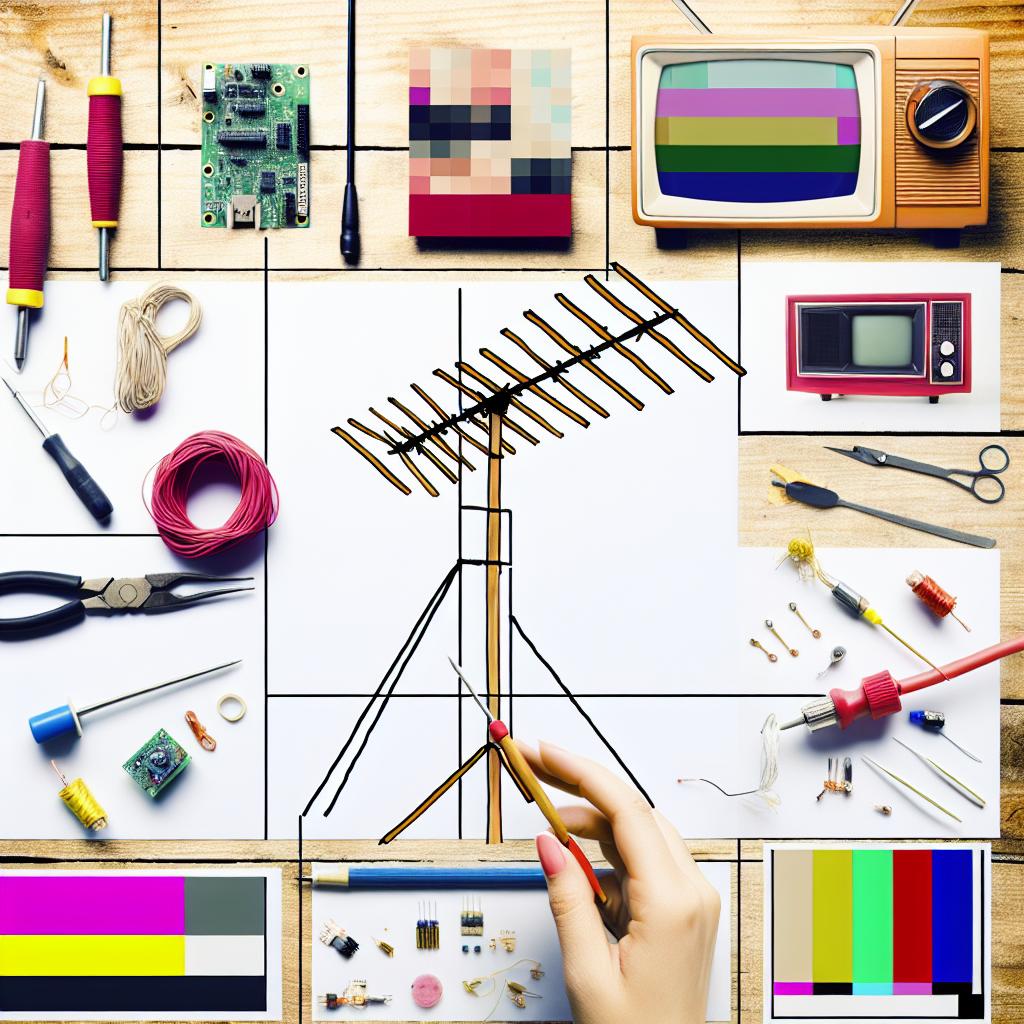How to Make a Homemade TV Antenna: A Cost-Effective Solution for DIY Enthusiasts
In an age where streaming services dominate, it’s easy to forget the reliable value of free over-the-air television. With the right setup, including a homemade TV antenna, you can enjoy a wide range of channels in stunning HD without any subscription fees. In this comprehensive guide, we’ll walk you through creating your very own DIY TV antenna using affordable materials. Whether you’re a DIY electronics hobbyist or simply looking to cut down on entertainment costs, this project is for you.
Materials Needed for Your Homemade TV Antenna
Before diving into this project, gather the necessary materials. Most can be found around your home or purchased inexpensively at a hardware store. Here’s what you will need:
- Coaxial Cable: At least 3 feet long with connectors on both ends.
- Balun Transformer (75 Ohm to 300 Ohm): This device connects the cable to your antenna.
- Sturdy Cardboard or Plywood: The base of your antenna, approximately 2 feet by 2 feet.
- Aluminum Foil: Enough to cover the base of your antenna.
- Wooden Dowel or Stick: To serve as a backbone for strength and support.
- Staple Gun or Tape: For securing the aluminum foil.
- Scissors: To cut the aluminum foil and other materials.
- Marker: To outline cut lines on the foil.
- Ruler or Measuring Tape: To measure and mark dimensions accurately.
Step-by-Step Guide to Building Your DIY TV Antenna
Step 1: Prepare the Base
Begin by preparing the base of your antenna. Use the wooden dowel to reinforce the cardboard or plywood by attaching it to the back using glue or tape. This will give your antenna structure and stability, making it easier to handle and position.
Step 2: Cut and Attach the Aluminum Foil
- Measure and cut the aluminum foil to cover one side of the base entirely.
- Using your marker, draw a zigzag pattern on the foil. Each zigzag should be about 3 inches wide and 4 inches high, similar to the shape of a lightning bolt.
- Carefully cut out this pattern. Once cut, spread out the foil over the base, ensuring the pattern remains unchanged.
- Use a staple gun or tape to secure the edges of the foil to the base snugly.
Step 3: Attach the Balun Transformer
- Identify the center of your zigzag pattern where the peaks converge.
- Connect the balun transformer to the foil, ensuring each wire makes contact with the foil’s peaks. The balun will act as an interface that transmits the captured signals via the coaxial cable.
Step 4: Connect the Coaxial Cable
- Take one end of the coaxial cable and connect it to the balun transformer’s output. This connection ensures signals are appropriately transferred from the foil to your TV.
- Secure the cable along the side of the antenna base, ensuring it doesn’t interfere with the foil pattern.
Step 5: Position the Antenna
Finding the right position is crucial for optimal reception. Place the antenna near a window or high up on a wall, avoiding obstacles like metal objects or thick walls that may interfere with signal strength. Consider experimenting with different placements to achieve the best reception.
Tips for Optimizing Reception of Your DIY TV Antenna
Test Multiple Locations
Placement can significantly affect the performance of your homemade TV antenna. Move it around various rooms or spots within a room to find the location that offers the best reception. Higher positions, such as near ceilings or upstairs rooms, tend to provide better signal quality.
Enhance with a Reflector
Consider enhancing your antenna’s performance by adding an aluminum foil reflector. Position the reflector behind the antenna, such as attaching it to a piece of cardboard to direct more signals towards the antenna. This may further improve reception by reflecting stray signals back into the antenna’s receiving path.
Regular Checks and Adjustments
Signals may fluctuate based on weather conditions or even new constructions around your home. Regularly check your antenna’s positioning and adjust as needed to maintain optimal reception.
Utilize a Signal Amplifier
If you live far from broadcasting towers, or your reception remains unreliable, add a signal amplifier in line with your antenna setup. These devices help strengthen the received signals, providing better picture quality.
For additional DIY projects that enhance your home’s functionality and aesthetics, explore our [DIY home automation projects](https://myhomediyguide.com/easy-diy-home-automation-projects/) and [affordable DIY design ideas](https://myhomediyguide.com/diy-design-ideas-home-budget/).
Your homemade TV antenna is now ready to provide you with free TV access by capturing over-the-air signals. Embrace the joy of discovering new projects that improve your home. For more creative endeavors, check out our guide on [simple DIY home design for beginners](https://myhomediyguide.com/diy-home-design-simple-decor-ideas-for-beginners/).
Creating a homemade TV antenna is not only a cost-effective project but also a satisfying achievement for any DIY enthusiast. Whether you’re aiming to improve your TV viewing experience or enjoy crafting your solutions, this project presents a valuable opportunity to harness your creativity and technical skills.


